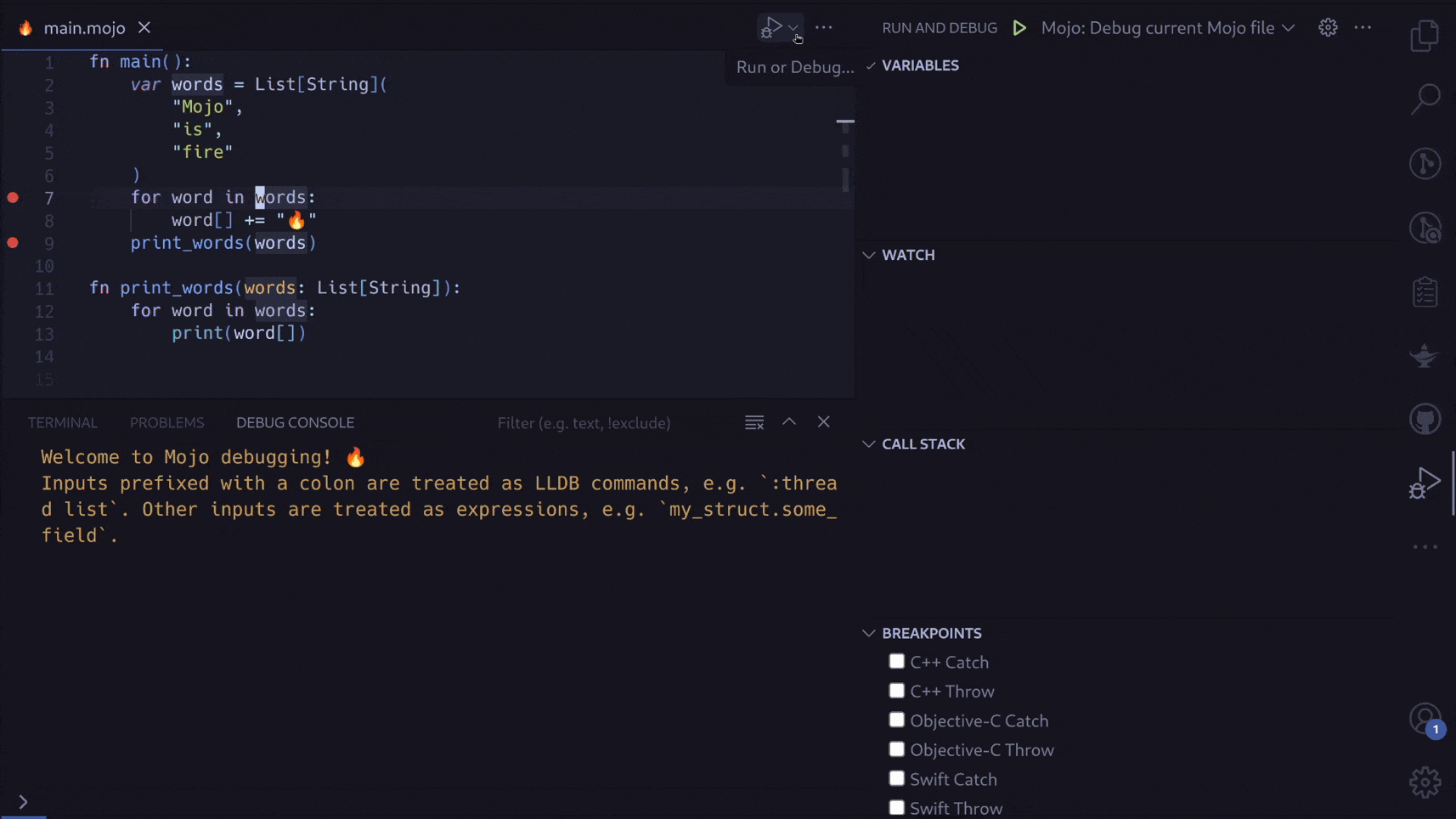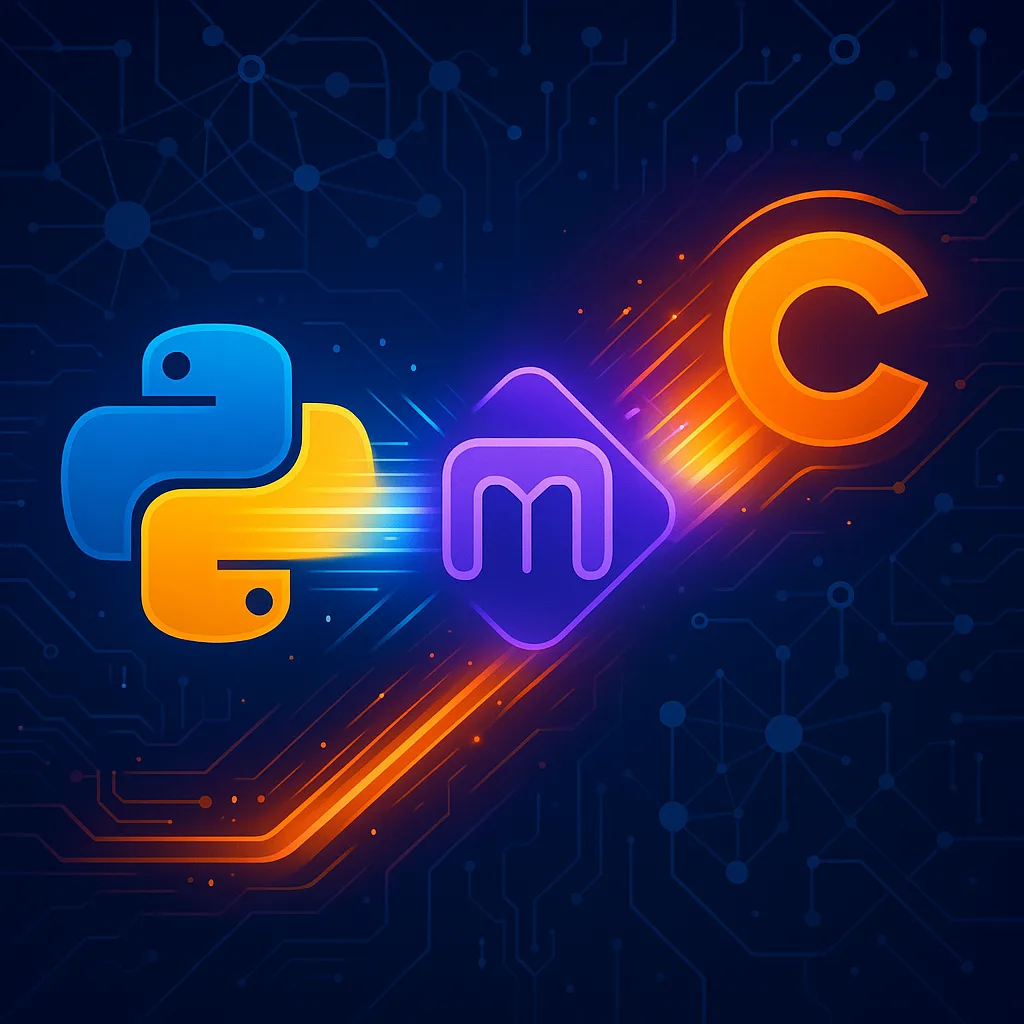Table of Contents
- The Origins of Mojo: From LLVM to AI-First Programming
- Understanding Mojo's Technical Foundation
- Key Features That Set Mojo Apart
- Code Examples: Mojo in Action
- Performance Comparison: Mojo vs Python
- Real-World Applications of Mojo
- Getting Started with Mojo in 2025
- The Future of Mojo: Roadmap and Potential Impact
- Industry Reception and Community Growth
- Mojo vs. Other High-Performance Languages
- Challenges and Limitations
- Is Mojo the Future of AI Programming?
Margabagus.com – In today’s rapidly evolving technological landscape, programming languages must continually adapt to meet the demanding requirements of artificial intelligence, machine learning, and high-performance computing. Among recent innovations, Mojo has emerged as a transformative programming language that fixes Python’s notorious performance and deployment problems while maintaining its accessibility and ease of use. For developers and engineers who’ve been juggling between Python’s simplicity and C/C++’s performance, Mojo represents a paradigm shift that could fundamentally change how we build AI applications.
Mojo is a programming language in the Python family that combines the usability of a high-level programming language with the performance of a system programming language such as C++, Rust, and Zig. It’s not just another incremental improvement to Python—it’s an ambitious reimagining of what Python could be if designed specifically for the AI era. As the demand for efficient AI development tools grows, Mojo positions itself as the solution to the “two-language problem” that has plagued developers for years.
The Origins of Mojo: From LLVM to AI-First Programming

The Mojo programming language was created by Modular Inc, which was founded by Chris Lattner, the original architect of the Swift programming language and LLVM, and Tim Davis, a former Google employee. Their intention was to bridge the gap between Python’s ease of use and the fast performance required for cutting-edge AI applications.
Chris Lattner’s background is particularly noteworthy—as part of his PhD thesis, he started the development of LLVM, which fundamentally changed how compilers are created and today forms the foundation of many widely used language ecosystems worldwide. He then launched Clang, a C and C++ compiler that sits on top of LLVM and is used by most significant software developers.
Interestingly, Modular wasn’t originally intending to build a programming language. As Lattner explained, “We started building a fancy code generator that had no frontend. We wrote everything using a new compiler framework named MLIR… When we had confidence in that, we said ‘Now what do we do about syntax?'” This pragmatic approach to solving real problems in AI development led to the creation of Mojo.
Understanding Mojo’s Technical Foundation
What makes Mojo unique is its technical architecture. The language extends Python with high-performance capabilities while maintaining Python-like syntax. It’s designed for systems programming, offering fine-grained control over memory and execution, and is tailored specifically for machine learning workloads, especially for AI frameworks like TensorFlow and PyTorch.
Unlike traditional Python which is interpreted, Mojo builds on the Multi-Level Intermediate Representation (MLIR) compiler software framework, instead of directly on the lower level LLVM compiler framework like many languages such as Julia, Swift, Clang, and Rust. This newer compiler framework allows Mojo to exploit higher-level compiler passes unavailable in LLVM alone and enables it to target more than just CPUs, including accelerators like GPUs.
This is a crucial distinction—while LLVM made it dramatically easier for powerful new programming languages to be developed over the last decade, MLIR provides an even more powerful core to languages built on it. If Swift was “syntax sugar for LLVM,” Mojo could be considered “syntax sugar for MLIR,” optimized specifically for AI applications.
Check out this fascinating article: The Ultimate AI Agent Tools and Frameworks Comparison Guide for 2025: Which Solution Is Right for You?
Key Features That Set Mojo Apart
Mojo introduces several innovative features that distinguish it from Python while maintaining compatibility:
- Python Superset with Performance Boosts: Mojo is designed as a Python superset, meaning most Python code runs in Mojo without modifications. However, it adds static compilation, where code is compiled into highly efficient machine code using MLIR, and offers a flexible type system supporting both dynamic and static typing depending on developer preference.
- Systems-Level Programming with Python Simplicity: A key trick in Mojo is that developers can opt-in at any time to a faster “mode” by using “fn” instead of “def” to create functions. In this mode, you declare exactly what the type of every variable is, allowing Mojo to create optimized machine code. Furthermore, using “struct” instead of “class” packs attributes tightly into memory, enabling data structures without chasing pointers—features that allow languages like C to be fast, now accessible to Python programmers.
- Memory Management: Mojo manages memory efficiently by freeing up unused resources, allowing programs to run smoothly. For greater control, it offers memory management similar to C++ and Rust. It also provides tools to break down complex tasks into manageable pieces for faster execution, and its ‘Autotune’ feature optimizes code performance for your machine.
- Hardware Acceleration: Mojo efficiently utilizes modern hardware like GPUs, TPUs, and AI-specific accelerators. It integrates seamlessly with existing Python libraries and AI tools, making it ideal for high-performance computing.
- Borrow Checker and Ownership Model: The language also provides a borrow checker, an influence from Rust. Mojo’s “def” functions use value semantics by default (functions receive a copy of all arguments and any modifications are not visible outside), while Python functions use reference semantics.
Code Examples: Mojo in Action
Let’s look at some code examples to better understand how Mojo works in practice:
Example 1: Hello World in Mojo
fn main():
print("Hello, World from Mojo!")
While this looks similar to Python, note the fn keyword that indicates this is a compiled function with type checking.
Example 2: Python vs. Mojo Function Definition
Python:
def add(a, b):
return a + b
result = add(5, 3) # Dynamic typing
Mojo (with types):
fn add(a: Int, b: Int) -> Int:
return a + b
let result = add(5, 3) # Statically typed and compiled
Example 3: Memory Management with Ownership
fn take_ownership(owned y: String):
y = String("Bye!") # y is an LValue here
print(y)
fn main():
var x = String("hello, world!")
take_ownership(x^) # x^ is passed as RValue
# print(x) # This would cause a compile-time error
# as x's ownership has been transferred
Example 4: Parallel Computation for AI Tasks
fn run_inference():
# Create the graph
graph = create_inference_graph()
# Place the graph on a GPU, if available. Fall back to CPU if not.
device = CPU() if accelerator_count() == 0 else Accelerator()
session = InferenceSession(
devices=[device]
)
# Compile the graph
model = session.load(graph)
# Perform the calculation on the target device
result = model.execute()[0]
Example 5: SIMD Vectorization for Performance
from Vector import SIMD
fn vector_add(a: SIMD[f32, 8], b: SIMD[f32, 8]) -> SIMD[f32, 8]:
return a + b # Single instruction performs 8 additions in parallel
fn main():
let vec1 = SIMD[f32, 8](1.0, 2.0, 3.0, 4.0, 5.0, 6.0, 7.0, 8.0)
let vec2 = SIMD[f32, 8](8.0, 7.0, 6.0, 5.0, 4.0, 3.0, 2.0, 1.0)
let result = vector_add(vec1, vec2)
print(result) # Prints [9.0, 9.0, 9.0, 9.0, 9.0, 9.0, 9.0, 9.0]
Performance Comparison: Mojo vs Python

The performance differences between Mojo and Python are substantial, though claims about exact improvements vary widely:
Modular has claimed Mojo can be up to 65,000 times faster than Python in certain benchmarks, specifically with the Mandelbrot set computation. This benchmark was chosen because it’s “Simple to express,” “Pure compute” (compute-bound), “Irregular computation,” “Embarrassingly parallel,” and “Vectorizable.”
In more modest but still impressive benchmarks, vector addition tests showed Mojo significantly outperforming Python. For example, when adding two 1000-dimensional vectors, naive Python implementation achieved a throughput of about 0.014 GFLOP/s, while NumPy reached 1.46 GFLOP/s (99 times faster). Mojo implementations were faster still, particularly when leveraging SIMD instructions and parallelization.
While Modular claims Mojo is 68,000 times faster than Python, Chris Lattner himself acknowledged this number is “cherry-picked,” though independent reports still indicate it’s at least 1,000 times faster in many cases. Lattner explained that “Within a CPU, you get a lot of these accelerator features now… and Mojo directly exposes them.”
It’s important to note that comparing language performance directly can be misleading—what we’re really comparing are implementations. The biggest performance gains in Mojo come from vectorization (SIMD instructions), multi-threading, and optimizations that Python implementations typically don’t use.
Check out this fascinating article: 7 Best AI Coding Tools That Boost Productivity
Real-World Applications of Mojo
Mojo’s performance characteristics and AI-first design make it particularly well-suited for several domains:
- AI and Machine Learning Development: Mojo is designed to be a faster alternative to Python and is aimed to be an ideal programming language for data science and machine learning. It makes machine learning more approachable for non-experts, enabling a larger user base to take advantage of cutting-edge technologies.
- Scientific Computing: Mojo is a great option for scientific computing because of its robust support for complex calculations and numerical operations. It can be used to create mathematical models, data analysis tools, and simulations.
- Systems Programming: Mojo is an excellent tool for creating operating systems, device drivers, and other system-level applications because of its low-level capabilities and support for system-level programming.
- High-Performance Computing: Mojo efficiently utilizes modern hardware like GPUs, TPUs, and AI-specific accelerators, making it ideal for high-performance computing.
Getting Started with Mojo in 2025
As of June 2025, Mojo has matured significantly since its initial release. Here’s how you can start using it:
The Mojo SDK allows programmers to compile and execute Mojo source files locally from a command-line interface and currently supports Ubuntu and macOS. Additionally, there is a Mojo extension for Visual Studio Code which provides code completion and tooltips.
To begin with Mojo, create a new file with a .mojo extension, write your code (which can be as simple as a “Hello, World!” program), and compile it. Mojo supports just-in-time (JIT) compilation, allowing you to test and refine your code rapidly without repeated compilation.
For those curious to try without installation, you can visit play.mojo and test Mojo directly in your browser through their interactive playground.
The Future of Mojo: Roadmap and Potential Impact
Mojo’s development is rapidly progressing, with significant milestones planned:
For 2025 and beyond, Mojo aims to become a full superset of Python with its own dynamically growing tool ecosystem. The roadmap has included expansion of the standard library, full GPU programming support, and package system development.
Recent milestones include improved Python interoperability—in May 2025, Modular announced that Python users can now call Mojo code from Python. This major development allows for gradual adoption without abandoning existing Python codebases.
According to Lattner, “Mojo will soon be a really good replacement for CUDA, we’re close to being a really good replacement for languages like Rust, and eventually we’ll be a good superset of what Python is loved for. But we have to do those steps incrementally and build out the features as we go.”
Industry Reception and Community Growth
The reception to Mojo in the development community has been largely positive, with particular enthusiasm from AI practitioners:
Developers have praised Mojo’s balance of performance and ease of use. One developer noted, “C is known for being as fast as assembly, but when we implemented the same logic on Mojo and used some of the out-of-the-box features, it showed a huge increase in performance… It was amazing.” Another commented, “It’s fast which is awesome. And it’s easy. It’s not CUDA programming…easy to optimize.”
The community is growing rapidly around Mojo. Notable figures in the AI community have expressed excitement, including Jeremy Howard of fast.ai who remarked: “A Mojo app can be compiled into a small, standalone, fast-starting binary. This is a game-changer! Think about the things you could do if you could create small fast tools quickly and easily, and distribute them in a single file.”
Mojo vs. Other High-Performance Languages
While Mojo’s comparison to Python is most common, it’s also worth examining how it stacks up against other high-performance languages:
When compared to languages like C, Go, and Rust, Mojo still claims performance advantages due to its support for SIMD, vectorization, and parallelization. The language’s advocates suggest that Mojo not only matches these languages in speed but offers a significantly more ergonomic programming experience.
Julia is perhaps Mojo’s closest competitor in the scientific computing space, with both languages offering Python-like syntax with compiled performance. The two languages have different strengths depending on use cases, with ongoing debate about their relative merits.
Compared to Python, Mojo offers dramatically improved performance through compilation and various optimizations. However, Python still maintains advantages in library ecosystem size, with “over 137,000 libraries” compared to Mojo’s developing ecosystem.
Check out this fascinating article: Best AI Music Generators Compared: Suno Vs Udio Vs Stable Audio
Challenges and Limitations
Despite its promise, Mojo still faces several challenges as it matures:
- Ecosystem Development: Python boasts an extensive ecosystem of libraries and frameworks, such as TensorFlow, NumPy, Pandas, and PyTorch. Mojo has a developing library ecosystem but significantly lags behind Python in this regard.
- Maturity and Stability: Mojo is still under development, so its features and capabilities continue to evolve. There is a limited amount of documentation and resources available compared to established languages, and its long-term viability will depend on its ability to attract a large community of developers.
- Learning Curve: While Mojo maintains Python’s syntax, it introduces new concepts like explicit variable declarations that may require adjustment for Python developers. According to one developer new to both languages, “Python proved to be more user-friendly… mainly due to its proper documentation (because of it being older than Mojo).”
- Licensing and Open Source Status: As of February 2025, the Mojo compiler is closed source with an open source standard library. Modular has stated an intent to eventually open source the Mojo language as it matures.
Is Mojo the Future of AI Programming?
Mojo represents a significant innovation in programming language design—one that directly addresses the growing demands of AI development while preserving the accessibility that made Python so ubiquitous in the first place. By combining Python’s simplicity with C-like performance, Mojo offers a compelling solution to the “two-language problem” that has forced developers to choose between ease of use and raw performance.
As one industry observer noted, “Mojo is a fascinating experiment in the programming world: combining speed, simplicity, and memory safety in one project. If Modular maintains its development pace and the community continues to actively contribute, Mojo has a real chance to become a key language of the AI era.”
For developers working in AI, machine learning, high-performance computing, and systems programming, Mojo offers an exciting new option that doesn’t force the typical tradeoffs. While it’s still maturing and building its ecosystem, the technical foundation and industry momentum behind Mojo suggest it could fundamentally reshape how we develop performance-critical applications in the coming years.
As computational demands grow and AI becomes increasingly central to software development, languages like Mojo that specifically address these challenges will likely play an increasingly important role. Whether Mojo becomes the dominant language for AI development or simply pushes the entire field forward, its impact on programming language design is already being felt across the industry. The AI programming revolution is here, and Mojo is leading the charge with its unique combination of accessibility, performance, and AI-first design.



